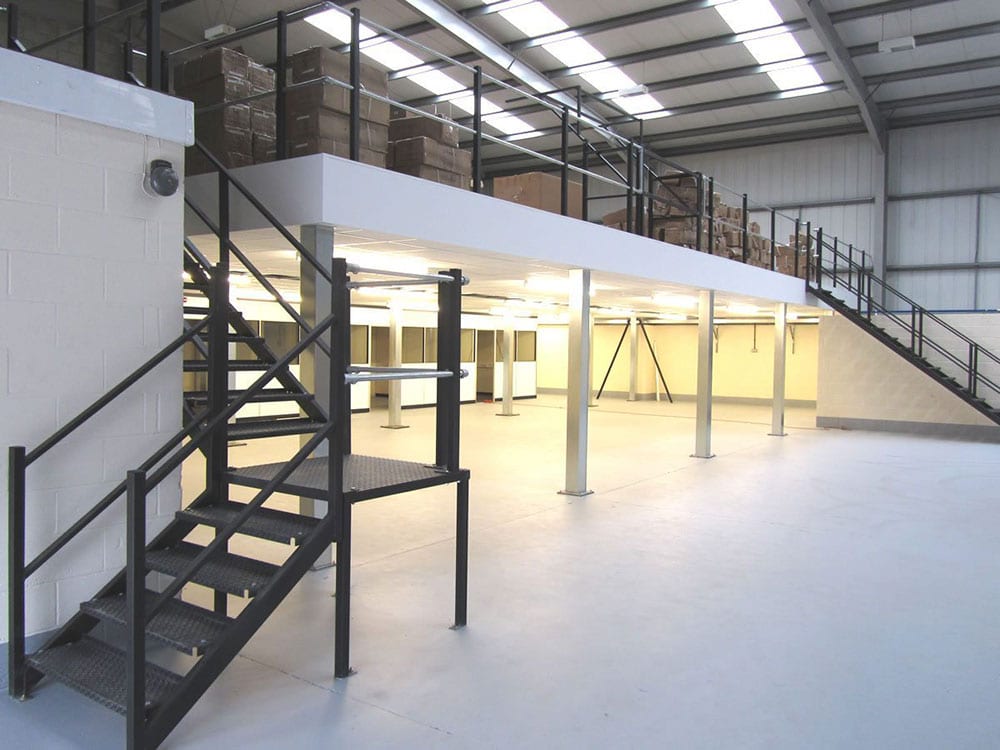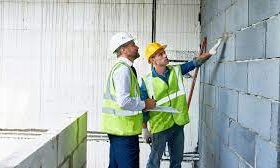Warehouse mezzanine floors allow you to build many stories in a warehouse without digging up the ground. They allow warehouse managers to increase storage capacity without increasing the building’s footprint by constructing additional floors.
To add square footage to a structure without having to expand it or move it, mezzanines are a great option. A mezzanine level may be installed as an additional floor. The financial savings to the building and company owners from installing a mezzanine level are substantial.
What are Mezzanine Floors?
Commercial and industrial real estate is among the most in-demand and expensive commodities. This is because of the high demand for these types of properties. Both retail establishments that offer the most up-to-date styles and industrial suppliers that move large and heavy items require access to sufficient storage and distribution facilities. Thus, warehouse mezzanines are installed for a more maximised and customised space.
A mezzanine floor is an elevated platform constructed of metal that can be positioned anywhere inside a warehouse to provide additional storage space. Mezzanine floors are also known as steel catwalks. Mezzanines provide a solid new floor that more than doubles the amount of usable floor space and workspace you already have.
Mezzanine floors are elevated platforms that are constructed by workers inside of a warehouse in order to provide additional workspaces at greater heights. These steel structures are typically freestanding and simple to deconstruct and transport after they have been constructed.
The vast majority of mezzanines in manufacturing facilities are constructed out of steel (carbon or stainless). The decking or flooring of the mezzanine could be different depending on how the area below is being used. In the same way as previously, the manufacturing process utilises either steel (in the form of bar grate or metal decking, for example), wood product finished flooring, or B-decking. A mezzanine might even have a concrete floor if it is planned and constructed properly.
5 Benefits of Implementing Mezzanines
A warehouse mezzanine is a versatile piece of equipment that may be put to use in a number of different environments. Implementing warehouse mezzanines can offer advantageous features to your business or workplace.
The following is a list of some of the more tangible benefits that may be gained by installing a mezzanine level in your warehouse, which you can use to help you decide whether or not you should have one:
-
Greater Useful Square Footage
The most obvious, and maybe most important, benefit of warehouse mezzanines is the additional room that it provides. Since the ceilings in warehouses are often rather high, a significant amount of the available vertical space is typically wasted. In order to make greater use of space that would otherwise be underused, it is standard practise for warehouses to add one or two levels to their mezzanine floors. Since they are built with high-quality materials that are designed to survive, mezzanine levels are suitable for usage in harsh environments such as warehouses.
-
Low-Cost Solution
A low-cost solution to the problem of needing additional space at your workstation. Warehouse mezzanines are an economical and trustworthy method to optimise your available space. Your storage space may be increased by a factor of four simply by installing a mezzanine level in your warehouse. This would not require you to relocate your activities, which would save both money and time.
-
Create Private Areas
It is possible to create private areas for each of your workers on the warehouse mezzanines by constructing partitions. The layouts of warehouses seldom feature areas that are designated particularly for workers or management. By constructing mezzanine floors, it is feasible to add conveniences such as bathrooms and offices to a warehouse without disrupting the operations areas below.
-
Easy Installation and Removal
The building of mezzanines, as well as their removal, is a straightforward operation. As was said before, bolting or connection of any kind, whether to the floor or the wall, is not required for mezzanine levels. As a consequence of this, after the key components have been manufactured, they may be easily assembled in a short period of time, then dismantled and relocated with relative simplicity if the need arises.
-
Adaptable Additions to Warehouses
Every structure may benefit from the inclusion of adjustable mezzanine floors. Warehouse mezzanines are designed to fit a wide variety of sizes and layouts since warehouses come in such a diverse range of shapes and sizes. Mezzanine levels may be constructed with as little as one floor or as many as your company demands, whichever is most cost-effective. There is also the possibility that they will have individualised amenities such as kitchens in the break rooms, digital cabling in the offices, and shower facilities for those who work the night shift.
In Summary
If you want more space for either a storage area or an office, you could find that warehouse mezzanines are a solution to your problems. Mezzanines allow facilities to make greater use of the vertical space that is already existing in a warehouse. This space may be used to improve storage and workspace, depending on the facility’s needs.








